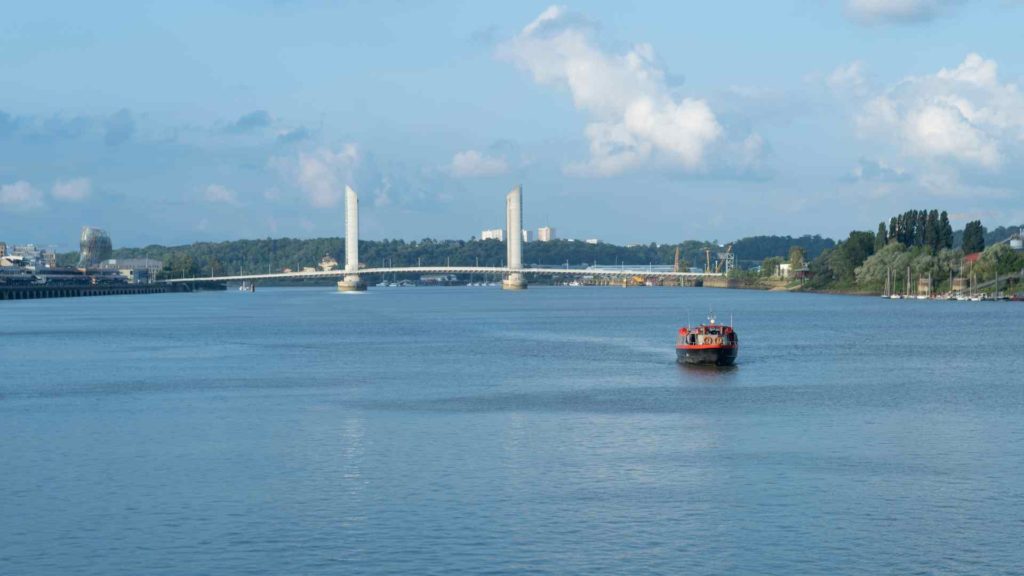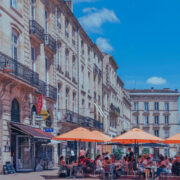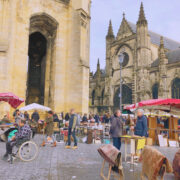
Jacques-Chaban-Delmas Bridge
The Jacques-Chaban-Delmas bridge is one of the most modern bridges in the city. Recently built, it connects the Bacalan dock with the Brazza dock.
Undoubtedly, Bordeaux is a city where you can enjoy many bridges, but this one has a particular charm. It is a drawbridge type construction that combines modern architecture with the tradition of the city. You can enjoy a guided tour of the bridge with the free tour of Bordeaux.
History of the Jacques-Chaban-Delmas
The Jacques Chaban Delmas Bridge is an outstanding engineering work located in the city of Bordeaux, France. Its history dates back to the 19th century, when the need to establish a more efficient connection between the neighborhoods of Bacalan and La Bastide was conceived and embodies the passage of Bordeaux’s history.
The first proposals for the construction of a bridge over the Garonne River emerged in the early 20th century, but due to various circumstances, the project was postponed for decades. Finally, in 2009, work began on the construction of the Jacques Chaban Delmas Bridge, named in honor of Jacques Chaban Delmas, a prominent mayor of Bordeaux.
The construction process was carried out by a team of French engineers and architects, who incorporated innovative technology and advanced techniques to make this impressive bridge a reality. After several years of hard work, the Jacques Chaban Delmas Bridge was inaugurated in March 2013, becoming an iconic symbol of the city of Bordeaux.
Since its opening, the bridge has witnessed numerous important events and has played a crucial role in improving the city’s infrastructure and mobility. It has also been recognized internationally for its award-winning architectural design and its positive impact on the image of Bordeaux as a modern and vibrant city.
Style of the Jacques-Chaban-Delmas
The bridge has a total length of 575 meters. Of these, 433 meters correspond to the central structure and a separate 117 meters of the lifting area, which is precisely what guarantees the flow of maritime traffic.
The bridge piles are protected by concrete islands at a height of 77 meters, both at the front and at the rear. The intention is to allow for possible collisions.
The Jacques-Chaban-Delmas Bridge can raise its central deck up to 77 meters high, allowing the passage of large vessels. For example, cruise ships arriving in Bordeaux and transiting this route.
The width of the bridge, depending on the section, can vary between 32 and 45 meters. In total, there are 27 useful meters, plus 15 meters that are used for transport, both public, bicycles and pedestrians. A detail worth noting is the fact that the sidewalks for pedestrians and bicycle paths are separated from automobile traffic.
It was developed for about 43,000 cars per day at most, plus a projection that it will be raised about 70 times per year. This represents an immobilization of traffic for a time of about one hour.
The lighting is one of the details worth highlighting. The lights, although it sounds contradictory, are not there to illuminate the space, but to highlight the lines of the structure.
The pylons have thousands of LED lamps that change color depending on the tide. When the tide is high, it is an ultramarine blue, while when it is low it changes to green. They also change color according to holidays or important dates for the city.
How to get to the Jacques-Chaban-Delmas Bridge
The bridge is in a relatively central location, between the stone bridge and the Aquitaine bridge. There are several options for getting around Bordeaux and getting to this point by public transportation system:
- By bus, you can take any of the lines 4, 7, 45 and 91.
- Regarding the train, it is the D33 line that passes through this area.
- The Tramway is route B which covers the route.
The stations, as well as the bus stops are located at a distance of three minutes walking from the bridge.
What to see near the Jacques-Chaban-Delmas?
Of course there is a lot to see in Bordeaux. Everywhere you look you find a perfectly preserved historic building, as well as a more than charming natural environment.
Among the attractions to see near the Jacques-Chaban-Delmas bridge are:
- La Cité du Vin: We don’t need any further description for this incredible place. Just tell you that if you like wine or you are interested in knowing a little more about its history, this is a must stop.
- Musée du Vin et du Négoce: In English it would be the museum of wine and commerce. And it is about the history of Bordeaux and wine are strictly linked.
- Quai des Marques: The Quai des Marques is a beautiful boulevard where you can enjoy exquisite gastronomy. There are some craft stores as well as local brands.
Discover Jacques-Chaban-Delmas through a Free Tour
Visiting Bordeaux is an experience that you must live and the Jacques-Chaban-Delmas bridge must be included in your itinerary.
Here technology, aesthetics and architectural level combine perfectly. You will enjoy this visit from beginning to end, especially if you come at night, where the lights are everything.
As with any new place to see, having the advantage of a Bordeaux city pass can help a lot. It will allow you to know details that only the locals know, plus they are adapted to your language.




